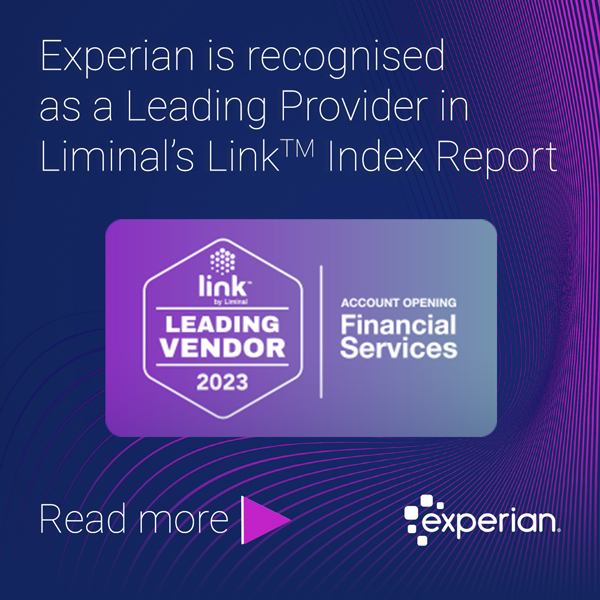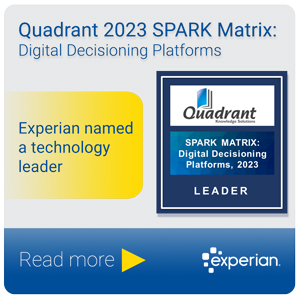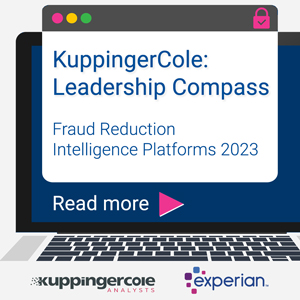
The ecosystem of credit lending platforms and technologies has rapidly grown in the past year. Lenders now find themselves in an increasingly competitive market with new players emerging on the scene. More companies now have access to advanced analytics and automation capabilities, and this is helping businesses improve the accuracy and inclusivity of consumer lending decisions – a giant step toward achieving their growth ambitions.
Our recent research shows that one of the top priorities for businesses has been to invest in new artificial intelligence and machine learning models for smarter customer decisions. But how effective is building new AI models without considering the data?
What is data-centric AI?
Building AI models on fixed data has already become an outdated approach. But by coupling data with the best model, better outcomes can be achieved. The concept of data-centric AI was coined by leading thinker in the AI space, Andrew Ng. Ng believed that models in production are only as good as the point-in-time data used to build them. As businesses continue to receive new data, this data needs to feed back into the model if it’s going to continue delivering the best results. This continuous loop of enriching the model with new data can be applied across use cases.
The value of data-centric AI models for acquiring new customers
By using the latest available data, rather than from 6-12 months ago or longer when the model was originally developed, data-centric AI models can:
• More rapidly account for changes in the economy and consumer finances
• Reach under-represented populations and provide greater access to credit
• Take advantage of newly available types of information from data providers
The value of data-centric AI in existing frameworks
More observations
AI is often limited by the data that was used to create the model. By using a more fluid open-source alternative, different data sets can be inputted to get more observations based on different characteristics and findings. For example, if a business wants to acquire a new type of customer, traditional AI would require a new model with new data sets to be in order to target this new customer. With data-centric AI, businesses can use an existing model and simply expand the data, thus allowing the model to work far more efficiently and target a new consumer base. It is a shared view that businesses should not build models with just their own data, because those data sources are too limited. At the very least, businesses want to combine data with a peer sample. However, an even better way is to use hybrid data sets in order to get the most observations. Data-centric AI makes that process easy without the need to create different models to see different outcomes.
Up-to-date data
The world is in a state of flux—populations change, people change. This means that the data pools AI models draw on may be compromised, no longer relevant, or have new meaning over time. It’s important to keep AI data sets recent and up to date, and not assume that the models used two years ago still apply today. For AI models to operate efficiently they need current, relevant data. Having a data-centric approach and sweeping through collected observations is essential for any business relying on their AI solutions.
Businesses must have processes to understand and test their data to be sure the values are still adding up to what they should be. Being disciplined about data hygiene, all the way back to the source, is a necessity.
Enriched and expanded data
With model-centric AI, businesses are limited by the data they start with. Data-centric AI makes it possible to expand on the current customer base, which already includes data on customer attributes, with new potential customers that might mimic characteristics of a business’s current base.
Expanded data can also play a role with financial inclusion and credit worthiness. Having a low credit score does not necessarily mean the consumer is a bad risk or that they shouldn’t be allowed access to credit—sometimes, it could mean there is simply a lack of data. Expanding data to include varied sources and adding it to current models without changing their structure, enables businesses to provide credit for individuals who may not have originally been accepted. This new approach in AI is creating solutions that are far more inclusive than previously possible.
Data has massively expanded and is constantly evolving. By using data combined with advanced analytics, such as AI, there will be more sophistication in the observations that come from the data. This will allow businesses to better decide what data they choose to rely on while ensuring accuracy. By using expanded data sources, the outcomes of models are changed, leading to more inclusive models better fit for decision making and improving performance.
“Models in production are only as good as the point-in-time data used to build them.” Andrew Ng
Infographic: Why data-centric AI leads to more accurate and inclusive decisions
Stay in the know with our latest research and insights:





